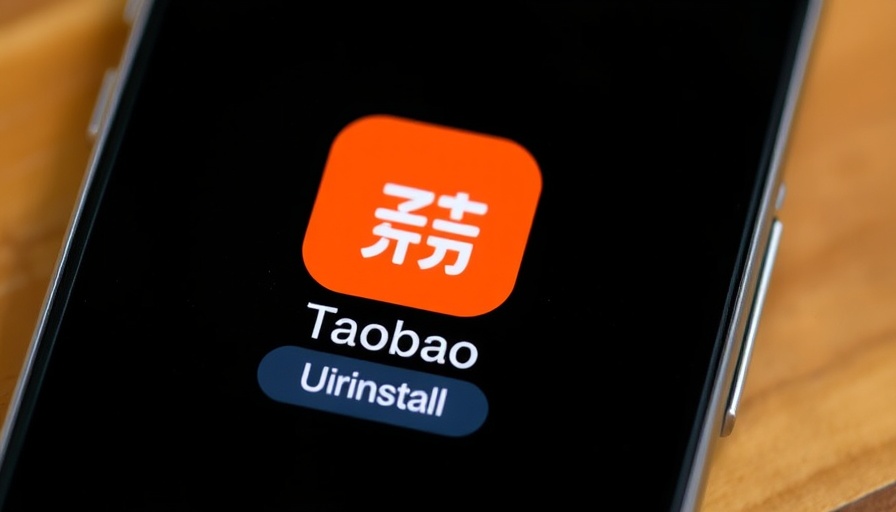
Taobao and DHgate: Rising Stars in U.S. E-Commerce
In an unexpected twist in the digital shopping landscape, the Chinese e-commerce apps Taobao and DHgate have recently surged in popularity among U.S. consumers. These apps, previously sidelined in the competitive shopping arena, are now making waves, landing in the Top 5 of the U.S. App Store. As shifts in consumer habits occur, it's critical to understand how these platforms offer unique options for savvy shoppers.
Understanding the Surge: Why Are Users Switching?
The catalyst for this growth can be traced to a mix of social media influence and economic factors. TikTok videos detailing the origins of luxury items have sparked curiosity among American shoppers. Many of these videos reveal that high-end goods—like handbags and clothing—are manufactured in China before being branded elsewhere. The revelation has motivated users to seek direct purchasing channels, choosing to skip the hefty price tags associated with traditional retail outlets.
App Install Trends: The Numbers Speak
Recent data highlights a staggering increase in app downloads—Taobao saw a whopping 514% rise in installs over the past month, with approximately 185,000 downloads in April alone. This growth isn't just a flash in the pan; Taobao climbed from obscurity to reach No. 5 in overall app rankings, indicating substantial and likely sustained consumer interest. It's noteworthy that Taobao had never breached these heights in the U.S. before, suggesting a significant change in consumer attitudes towards Chinese e-commerce.
Insights into Consumer Behavior: Seeking Value in Luxury
Many Americans are increasingly wary of rising prices on popular shopping apps like Shein and Temu, making what seemed once like an unthinkable leap to alternatives like Taobao and DHgate. The promise of purchasing luxury-style goods—or even the real deal, sans the markup—serves as a compelling motivation. However, it's important for consumers to practice caution and scrutinize seller reviews and buyer photos; quality can vary widely on these platforms.
Future Trends: What This Means for E-Commerce
The recent ascension of Taobao and DHgate could herald a new era in e-commerce, particularly for international shopping. As U.S. consumers become more accustomed to online buying from foreign retailers, we may see enhanced competition among e-commerce platforms. Traditional U.S. retailers could feel pressure to adjust pricing strategies to remain competitive as these apps gain traction.
A Deeper Dive: What Brands Should Know
For established brands, the rise of Taobao and DHgate poses both challenges and opportunities. They must adapt to changing consumer preferences that favor direct purchasing from manufacturers and consider collaborating with these platforms to reach a broader audience. E-commerce strategies need recalibrating to meet this new demand.
Final Thoughts: Embracing the Change in Shopping Culture
As the e-commerce landscape evolves, the presence of apps like Taobao and DHgate in the U.S illustrates a significant cultural shift in shopping behavior. Consumers are now more inclined to seek value and transparency in their purchases, compelling traditional retailers to rethink their approaches in a rapidly shifting marketplace. Understanding this trend can offer valuable insights for both consumers and businesses alike.
 Add Row
Add Row  Add
Add 



Write A Comment